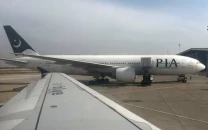Thousands went to school due to increase in remittances
Pakistan is one of the top 10 remittance recipients worldwide received $21 billion in remittances last year

Political agent says governor to head BoG of institution affiliated with Lawrence College.
PHOTO: REUTERS
One of the top 10 remittance recipients worldwide, Pakistan has received $21 billion in remittances last year. These findings are calculated using data from UNESCO, the World Bank, and Pakistan’s national household survey.
Microsoft teams up with Sindh govt to digitise classrooms
The research shows that 450,000 children in Pakistan are in school as a result of receiving remittances, while on the other hand, school-age children are 40 per cent less likely to attend school if their household receives remittances. Approximately 220 million children in low and middle-income countries are not in school out of which 19 million live in Pakistan.
WorldRemit is also calculating if traditionally, cash-based money transfers were replaced by lower-cost digital alternatives. Savings from “going digital” could pay for 20 million uniforms, 20 million school books and 16 million sets of school supplies for those who come from low and middle-income countries.
Technological solution: Land transfer records digitised in Peshawar
“As millions of children in Pakistan go back to school this term, our research is a timely reminder that the contributions of the diaspora are vital to the education of 450,000 children across the country,” said Hamza Islam, Country Director, WorldRemit Pakistan.



















COMMENTS
Comments are moderated and generally will be posted if they are on-topic and not abusive.
For more information, please see our Comments FAQ